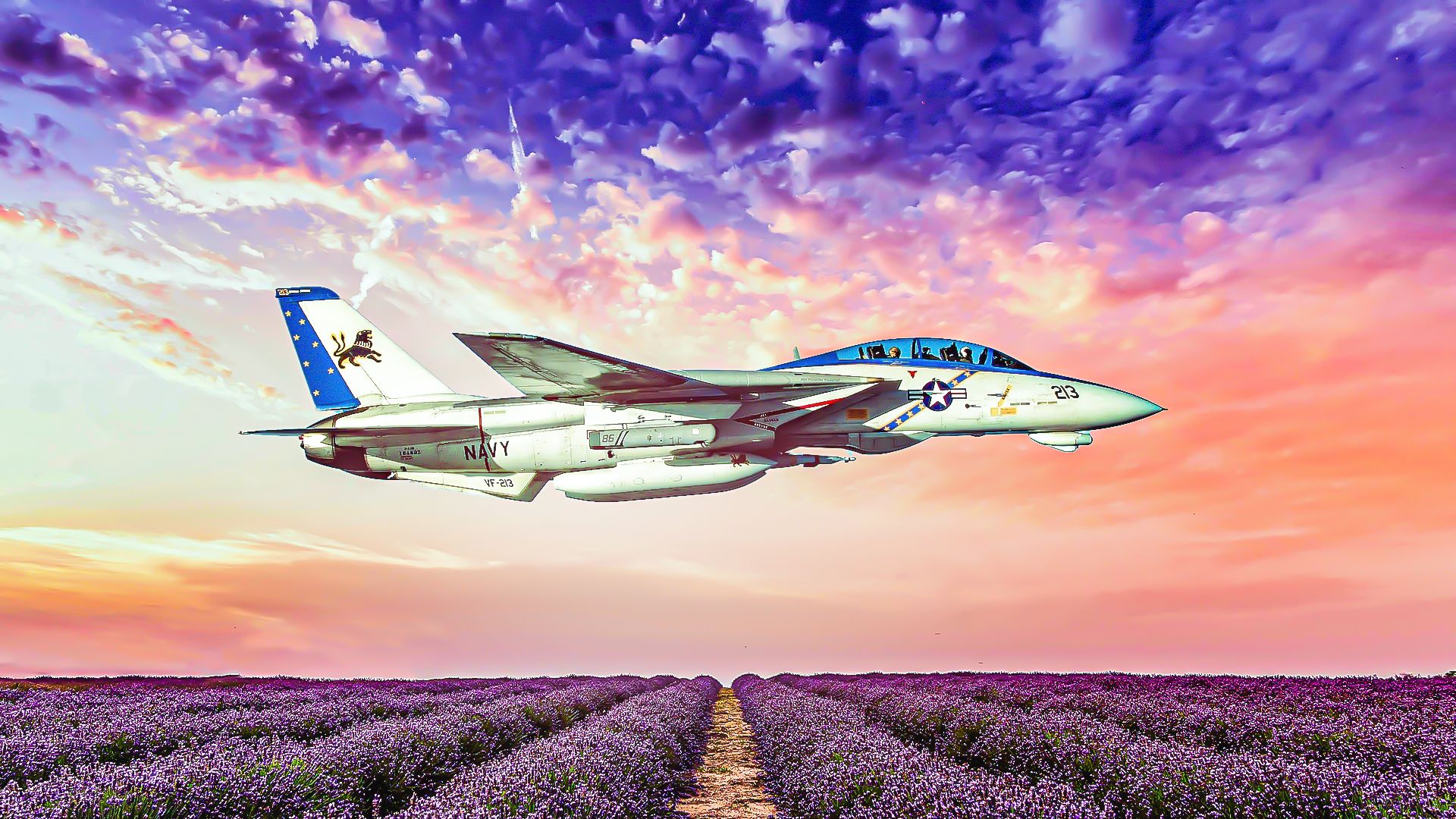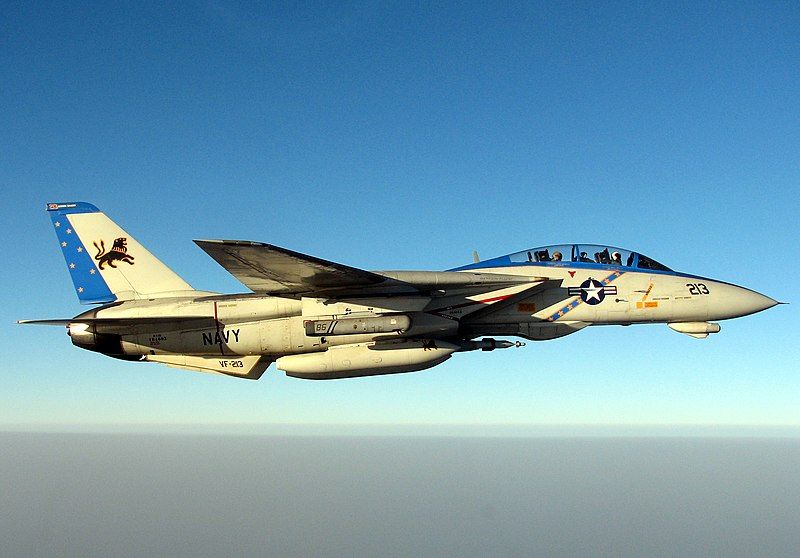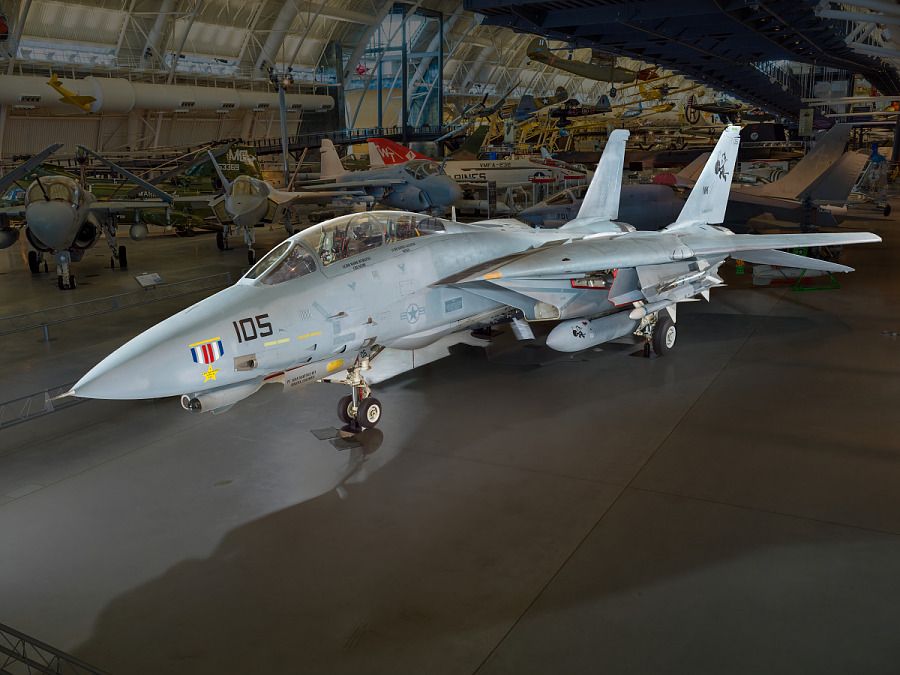Mention the word “generation” to a Star Trek fan (I won’t go down the rabbit hole of debating whether the correct slang term is “Trekkie” vs. “Trekker”), and they will think of either the TV series Star Trek: The Next Generation (TNG) and/or the 1994 cinematic feature Star Trek Generations, which skillfully infused the casts and characters of both the original series and TNG.
To those of us who remember the infamous “Cola Wars” of the 1980s, the word “generation” conjures up that one Pepsi advert slogan, “Choice of a New Generation.”
In the military aviation world, “generation” is used to classify the major technological leaps in the historical development of the jet fighter. So then, the short answer to the question posed by the title of this article is “Yes.” But our loyal readers don’t turn to our publication for mere one-word answers (I mean, how freakin’ dull would THAT be), so accordingly, Simple Flying shall now examine (1) what makes the legendary Grumman F-14 Tomcat a 4th Generation fighter, and (2) what makes the Tomcat stand out amongst other 4th Generation fighters.
Defining the Generations (and where the F-14 fits in)
For the benefit of our readers who aren’t as familiar with jet fighter history and jargon, I reckon it behooves us to define and differentiate the fighter jet generations. The ever-savvy Alex Hollings of Sandboxx (who was also my part-time virtual colleague when I wrote for 19FortyFive) provides us with a very handy and simplified (“break it down Barney-style,” as my FLETC instructors used to put it) guide:
- 2nd Generation: Swept wings, range-finding radar, and infrared-guided missiles, e.g., MiG-21 “Fishbed,” Lockheed F-104 Starfighter, Dassault Mirage III
- 4th Generation and beyond: High levels of agility, some degree of sensor fusion, pulse-doppler radar, reduced radar signature, fly-by-wire, look down/shoot down missiles, and more, e,g, McDonnell Douglas/Boeing F-15 Eagle, General Dynamics/Lockheed Martin F-16 Fighting Falcon (AKA “Viper”), MiG-29 “Fulcrum,” Sukhoi Su-27 “Flanker”…and, aahh yes, the star of this show, the Grumman F-14 Tomcat.
- 5th Generation: Stealth, high degree of maneuverability, advanced avionics systems, multi-role capabilities, network or data fusion capabilities, e.g. Lockheed Martin’s F-22 Raptor and F-35 Lightning II, Chengdu J-20 “Fagin,” Su-57 “Felon”
Like all its 4th Generation brethren, the F-14 is a supersonic warbird, with a max airspeed of Mach 2.34 (1,544 mph, 2,485 km/h, 1,341 kn) at altitude. It made its maiden flight on December 21, 1970 (yes, whilst the Vietnam War was still raging) and officially entered operational service with the US Navy on September 22, 1974.
Claims to Fame Part I: F-14 the movie star
Though the Tomcat was a child of the 1970s, it was during the single greatest decade of action-adventure movies, i.e., the 1980s (any argument to the contrary is hereby invalidated), that this mighty warbird became a mega-star in the eyes of the American moviegoing public, thanks, of course, to the 1986 blockbuster Top Gun starring Tom Cruise and Val Kilmer.
So then, which variant of the F-14 was used in this unforgettable film? Quinn Hough of ScreenRant informs us that it was the original iteration, the F-14A. 479 of these were sold to the US Navy and 79 ended up in Iranian hands (back when that country was still an American ally under the rule of the Shah).
Oh yeah, six years before Top Gun came out, the F-14 also starred in the Pearl Harbor time travel thriller The Final Countdown:
Claims to Fame Part Deux: F-14 the real-life aerial combat badass
Movies and Hollywood hokum are one thing; real-world performance in the life-or-death crucible of air-to-air combat is on a whole ‘nother level. And it was in this crucible that the F-14 truly proved its mettle. As I noted in a September 2022 article for 19FortyFive:
“Cinematic exploits aside, the real-life Tomcat certainly distinguished itself in air-to-air combat in the 1980s and 1990s, garnering a 5:0 kill ratio in the hands of U.S. Naval Aviators, as well as an officially claimed 130 victories versus only 4 losses for Iranian Air Force pilots during the Iran-Iraq War.”
The great irony is that no American Tomcat drivers ever achieved ace status (5 or more air-to-air kills), yet plenty of Iranian Air Force (IRIAF) pilots did so; I say “great irony,” of course, but virtue of the fact that Iran has remained one of the United States’s great adversaries ever since the 1979 Iranian Revolution that brought the radical Islamist regime of the Ayatollah Ruhollah (17 May 1900 or 24 September 1902 – 3 June 1989) Khomeini to power. Indeed, Iran was deemed by then-President George W. Bush in his 2002 State of the Union (SOTU) address to be a member of the “Axis of Evil.”
Now, mind you, the IRIAF claims must be taken with a grain of salt. As aviation expert Tom Cooper stated in a September 2006 interview with Smithsonian Magazine (cleverly titled “Persian Cats”):
“It is impossible to tabulate, for example, how many air-to-air victories were scored by Iranian F-14s because air force records were repeatedly tampered with during and after the war for political, religious, or even personal reasons.”
Nevertheless, the F-14 did indeed render excellent service in head-to-head battles with then-Iraqi strongman Saddam Hussein’s MiG and Sukhoi warplanes. As for the lucky few IqAF fighter jocks who managed to shoot down a Tomcat – rare birds, indeed – the somewhat scanty evidence indicates that two of them did so in a MiG-23, while one kill apiece is credited to a Dassault Mirage F1 and a MiG-21.
Going back to the F-14’s combat record with USN crews at the controls, the first “blooding: occurred during the August 19, 1981 Gulf of Sidra incident, wherein two Tomcats from VF-41 Black Aces — operating off the aircraft carrier USS Nimitz (CVN-68) — were engaged by two Libyan Su-22 “Fitters”.belonging to then-Libyan dictator Muammar Muhammad Abu Minyar al-Gaddafi (c. 1942 – October 20, 2011). After safely evading the Fitters’ missiles, the Tomcat crews retaliated with AIM-9L Sidewinder infrared (heat-seeking) missiles. Final score: Tomcats 2, Fitters 0.
Where are they now?
Alas, all good things must come to an end, and accordingly, the venerable f-14 was finally retired from US Navy service on the 32nd anniversary of its debut, Sept. 22, 2006. Its replacement was the F/A-18 Super Hornet, which, fittingly enough, the star of the long-awaiting sequel Top Gun: Maverick in 2022 (though the F-14 was not to be denied some memorable screentime in that film as well).
.
Out of 712 F-14s produced, approximately 70 have been preserved as static displays at museums and military installations throughout the US. Amongst the most historically significant specimens is Bureau Number (BuNo) 159610, ensconced at the Smithsonian National Air and Space Museum, Steven F. Udvar-Hazy Center, Chantilly, Virginia. This baby scored one of two confirmed kills against Libyan MiG-23s during the Second Gulf of Sidra Incident on January 4, 1989.
However, the true swan song of the F-14 Tomcat has not actually been sung yet. Amazingly enough, the plane remains in service with….yep, you guessed it, those pesky Iranians. As I noted in an April 2024 article for Simple Flying, the IRIAF still has an estimated 26 Tomcats in service! How they manage to keep them flying in spite of the dearth of spare parts fairly well boggles the mind.


